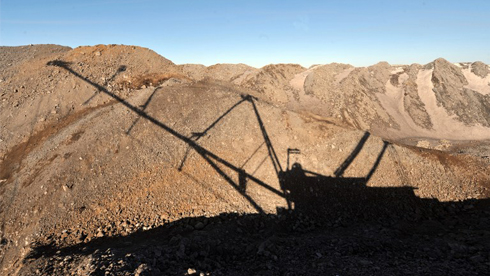Estonia has a precious mineral resource that is enough to inspire jealousy in the two other Baltic States. The country has shale oil. Not so long ago, it looked as though the days of Estonian shale oil were numbered. The oldest power stations in the country were threatened by increasingly strict European Union environmental protection regulations set to come into force in 2015. At the same time, any decision to build new power stations, which meant acquiring the necessary carbon credits, was going to be a costly one.
However, this situation changed radically about five years ago. In the wake of a significant worldwide increase in prices paid for oil and gas, their continued extraction from shale finally appeared to be a relatively cheap option. The Estonians rebuilt their oldest power stations and embarked on the construction of new ones. They also perfected the technologies for processing shale, which increased the quantities of gas and oil obtained.
Now that the construction of a new nuclear power station in Lithuania [a project undertaken in partnership with Latvia and Estonia] has been suspended, Estonia will continue to be the main producer of electricity in the Baltic States in the coming decade. And in spite of criticism of the pollution it generates, the shale oil industry has no plans to cut back on production.
Estonia, which has approximately 17 per cent of Europe’s reserves, is the world’s biggest user of shale oil. And at current levels of extraction, the country will likely have enough shale for the next 50 years. Some 80 per cent of the shale that is used to produce energy in the world is burned in Estonia.
Long love affair with shale oil
Estonia has been making use of shale oil for more than a century. The fuel was first extracted in 1917, and eight years later, it was used to provide energy for the country’s first power stations. In the year 2000, Paul Nikolai Kogerman, the scientist who made a major contribution to the launch of the shale oil industry, was elected one of the most important figures of the 20th Century by the people of Estonia.
During World War II, the German occupation forces became particularly interested in the possibilities of a fuel made from shale with the twin advantages of resistance to low temperatures and a higher density than water, which made it ideal for use in submarines. At one point, Russian scientists even believed that Estonian shale could be used to enrich uranium.
Today, one third of the 12 terawatt hours of electricity that Estonia produces every year is exported. At the same time, the country also exports an annual 1.2m barrels of oil and 40m cubic metres of gas.
Estonians are also intent on sharing their technical experience with other parts of the world. Three years ago, they concluded an agreement with Jordan for the application of shale extraction technologies and the construction of shale fired power stations, which are expected to come on-stream in 2016. Last year they bought a shale processing company to produce oil in Utah in the US.
Environmental cost
Shale combustion causes more carbon dioxide emissions than the burning of other fuels, which is why Estonia needs to acquire additional carbon credits. European officials are constantly reminding the country that it ought to diversify its energy sector. The reproaches levelled by the EU are not unjustified. On average, shale oil power production produces twice as much emissions as other technologies in use in the European Union. However, the endlessly rational Nordics of the Baltic have turned a deaf ear to such reprimands.
Carbon dioxide is just one by-product of shale energy. The other is slag. Every tonne of shale oil that is burned produces 450kg of slag, and every year, Estonia extracts 17m tonnes of shale oil, most of which is used to fuel its power stations. As result, the country has to dispose of an annual 7m tonnes of slag.
The impact of this huge quantity of waste is clearly visible in the region of Narva, where it has been piled up to create artificial hills. Some of these have been planted, and one of them has even provided the site for 17 wind turbines. Estonians joke that in a few years they will be able to open a proper ski resort. In the meantime, a first ski slope began operating earlier this year.
Was this article useful? If so we are delighted!
It is freely available because we believe that the right to free and independent information is essential for democracy. But this right is not guaranteed forever, and independence comes at a cost. We need your support in order to continue publishing independent, multilingual news for all Europeans.
Discover our subscription offers and their exclusive benefits and become a member of our community now!












